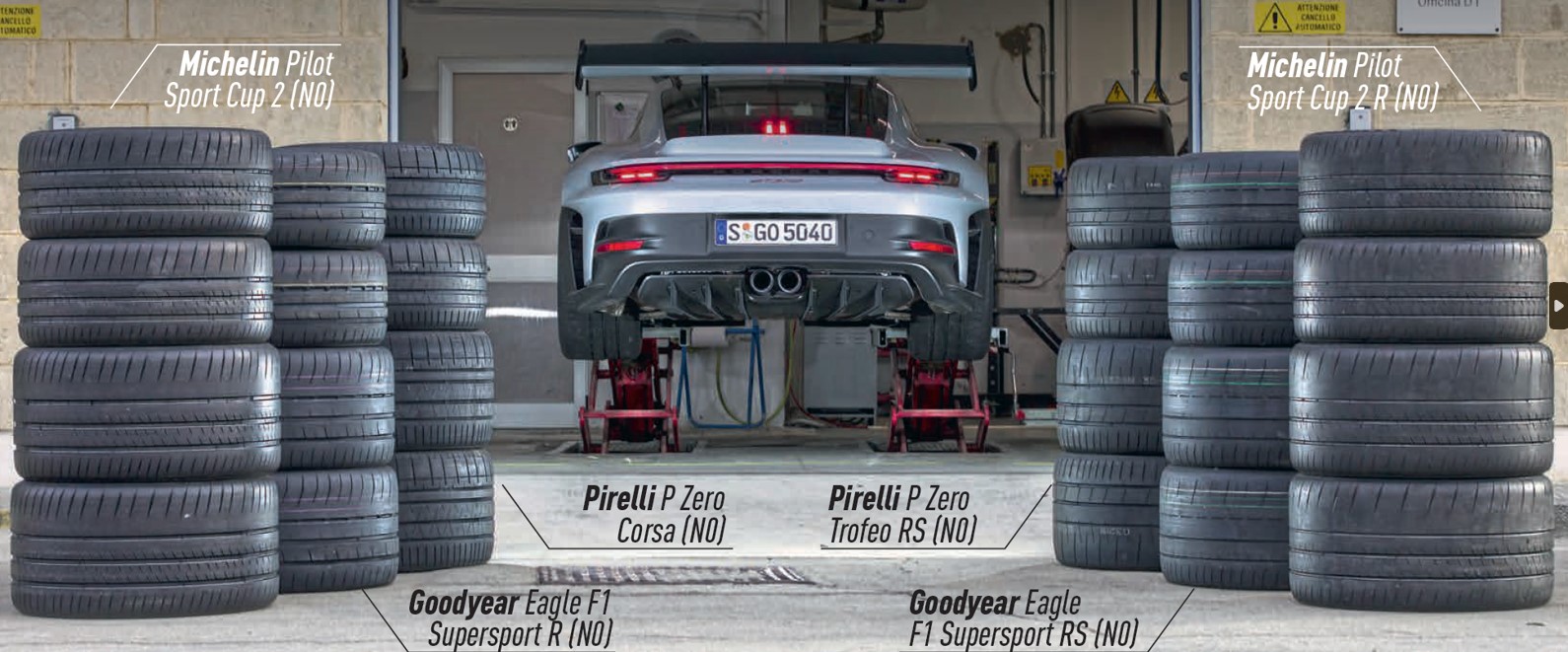All Categories
Featured
Table of Contents
The Michelin provided a comfy driving experience, qualified by responsive steering and a dynamic understeer equilibrium. In spite of the cooler testing conditions, Michelin's constant time and grip over 3 laps suggests its suitability for real-world applications. On the other hand, Yokohama's efficiency was unique. While its super-quick steering resulted in a quick front axle turn, the rear revealed a tendency to turn extra.
Another significant element was Yokohama's workout time. The tire's very first lap was a second slower than the second, pointing to a temperature-related grip rise. This recommends the Yokohama could shine in completely dry, race-like conditions. Nonetheless, for day-to-day usage, the Michelin could be a more secure wager. Next off in line was the Hankook.
Tyre And Wheel Services Near Me
It shared Michelin's secure understeer balance yet did not have the latter's readiness to transform. Continental and Goodyear's efficiencies were significant, with Continental's brand-new PremiumContact 7 showing a significant improvement in damp problems contrasted to its precursor, the PC6. This version was far much less delicate to pack modifications and acted just like the Michelin, albeit with a little less communication at the limitation.
It incorporated the secure understeer equilibrium of the Michelin and Continental with some sporty handling, confirming both foreseeable and quick. As an all-rounder for this Golf GTI, Goodyear's Asymmetric variety was the standout, showing remarkable efficiency in the wet. The Bridgestone Potenza Sporting activity took the crown as the fastest tyre, albeit by a little margin.
Motorists seeking an interesting wet drive might discover this tire worth considering. The standout entertainer in damp braking was the most recent tyre on examination, the PremiumContact 7, though the results are nuanced.
Affordable High-performance Tyres – Bennett Springs 6063 WA
Preferably, we wanted the cool temperature examination to be at around 5-7C, but logistical hold-ups suggested we examined with an average air temperature of 8C and water at 12C. While this was cooler than common examination problems, it was still warmer than real-world problems. The cozy temperature level examination was done at approximately 18C air and 19C water.
The third run included wet stopping examinations on used tyres, particularly those machined down to 2mm with a small confrontation. While we intended to do more with these worn tyres, weather constraints limited our screening. It's worth noting that wet stopping is most critical at the used state, as tyres typically improve in dry conditions as they put on.

Bridgestone, Goodyear, and Michelin saw the least performance decrease when put on. The Hankook tyre registered the tiniest performance drop as temperature levels cooled, yet it was among the most impacted when used.
Wheel Alignment Near Me – Bennett Springs WA
The take-home message right here is that no solitary tire stood out in all elements of wet stopping, suggesting an intricate interaction of factors influencing tyre efficiency under different conditions. There was a standout tire in aquaplaning, the Continental finished top in both straight and bent aquaplaning, with the Michelin and Goodyear also very great in deeper water.

Yokohama could take advantage of somewhat even more grasp, an issue possibly affected by the cooler conditions. When it comes to dealing with, all tires performed within a 2% range on the lap, showing their top quality performance (Premium tyre selection). However, considering these tires basically target the same customer, it's intriguing to observe the considerable differences in feel.
The surprise is since the PremiumContact 6 was just one of my favourites for sporty dry drives, however its successor, the PremiumContact 7, seems a lot more fully grown and appears like Michelin's performance. Among these, Hankook was the least specific in guiding and communication at the limitation. Tyre rotation. Both Michelin and Continental used beautiful initial steering, albeit not the fastest
If I were to recommend a tire for a quick lap to an amateur, say my papa, it would be just one of these. We have the 'enjoyable' tires, particularly Yokohama and Bridgestone. Both were swift to guide and felt sportier than the others, but the trade-off is a much more lively back side, making them a lot more difficult to handle.
Tyre Inspections Near Me
It gave comparable guiding to Bridgestone but used much better responses at the restriction and better hold. The Bridgestone Potenza Sport, nonetheless, seemed to break down fairly rapidly after just three laps on this demanding circuit. Lastly, there's Goodyear, which positioned itself somewhere in between the enjoyable tires and those often tending towards understeer.
All in all, these tires are exceptional entertainers. In terms of tyre wear, the technique utilised in this test is what the industry refers to as the 'gold criterion' of wear.
Both the Bridgestone and Yokohama tyres substantially underperformed in comparison to the various other four tires in terms of rolling resistance, with Continental a little outmatching the rest. Pertaining to the convenience degree of the tyres, as prepared for, a lot of demonstrated an inverted relationship with handling. The Continental, Michelin, and Goodyear tyres executed best across different surface area kinds evaluated.

Bridgestone started to reveal indications of suppleness, while Yokohama was especially rough over holes. We did determine interior noise degrees; however, as is typically the case, the outcomes were carefully matched, and as a result of weather restrictions, we were not able to carry out a subjective assessment of the tires sound. Ultimately, we considered abrasion figures, which determine the quantity of tire walk shed per kilometre, normalised to a one-tonne car.
Tyre Installation – Bennett Springs
This number stands for the amount of rubber dust your tires create while driving. Michelin led in this category, creating over 9% much less rubber particle matter.
Table of Contents
Latest Posts
Best Discount Tyres
Budget Car Tyres – Wangara
Honest Tyre Installation
More
Latest Posts
Best Discount Tyres
Budget Car Tyres – Wangara
Honest Tyre Installation